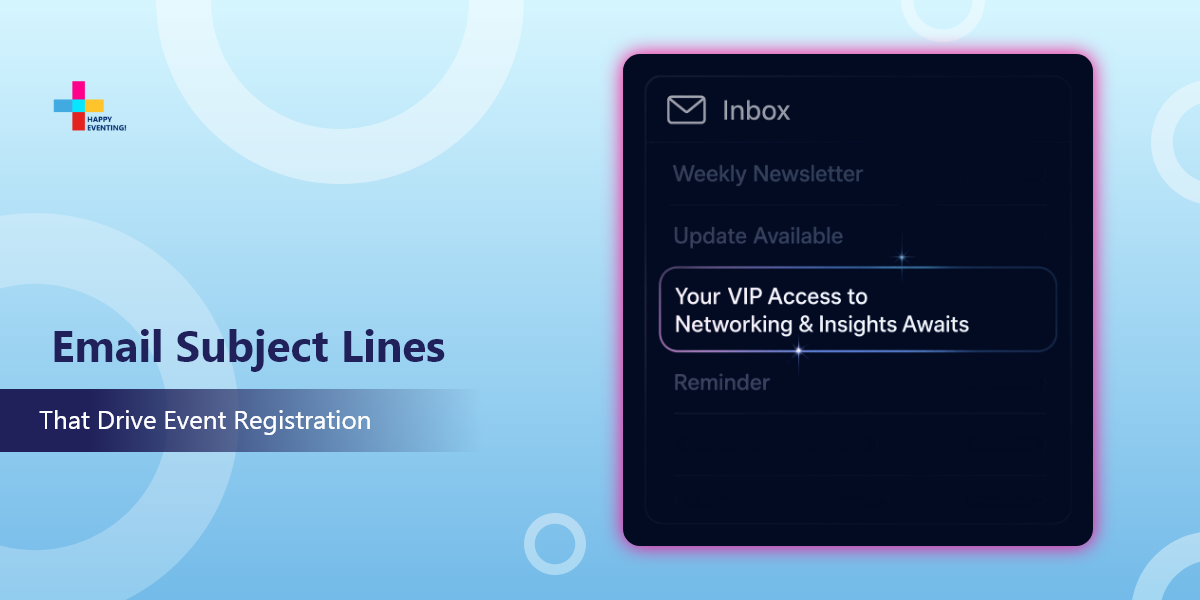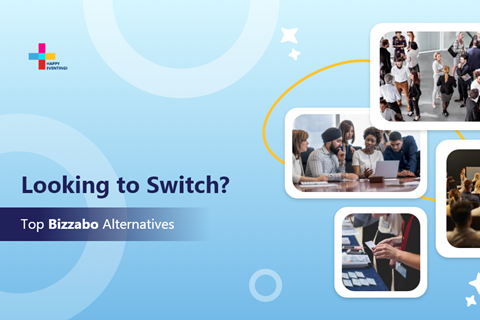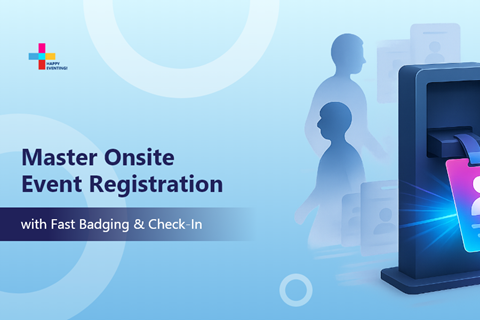

- {{UserName()}}
Request a Demo




If you've ever launched a polished campaign only to see open rates stall in the single digits, you're not alone. Event registration emails often underperform—not because your event lacks appeal, but because your subject lines fail to do their job.
Here are the common traps organizers fall into:
• Believing the "more urgency = better results" myth, cramming subject lines with "Last Chance!!!" and "Don't Miss Out!" until the words lose all effect
• Treating subject lines as transactional headers instead of psychological doorways
• Forgetting that people don't click emails because of the sender—they click because of the story their brain builds in three seconds or less
The reality is attention dynamics have shifted. Email isn't a notice board anymore—it's a relationship tool. Subject lines are the first handshake, and if that handshake feels pushy, generic, or empty of value, your open rates collapse before the campaign even begins.
This guide will take you beyond clichés into psychology-driven best email subject line strategies for event registration grounded in audience behavior, designed to increase opens, build anticipation, and lead directly to event registrations.
When an email lands in a crowded inbox, readers give it about three seconds before they choose to open or ignore. That decision happens subconsciously through three quick mental filters:
If you miss even one of these filters, your subject line fails. Hit all three, and your email becomes nearly impossible to ignore.
Subject lines behave like personalities at a networking event. Some spark curiosity, some showcase value, some create belonging, and others break patterns to stand out. The strongest event email subject lines rotate across all four:
1. The Curiosity Creator
This style sparks curiosity by hinting at information readers don't yet know. The trick is to tease insight without giving the full answer, creating an open gap that drives them to click.
Example: The one email change that doubled sign-ups — it leaves the "change" unnamed, which forces readers to open the email to resolve the gap.
2. The Value Announcer
This approach puts the benefit front and center. It resonates with busy professionals who want to know exactly what they'll gain before they open the email. Often framed with numbers, results, or time savings.
Example: How one tweak lifted registrations by 42% — it shows the benefit immediately, using proof and a concrete number to signal clear value.
3. The Community Builder
This type taps into belonging. Professionals don't want to miss where their peers are gathering. By signaling momentum, social proof, or group participation, these subject lines trigger a natural sense of FOMO.
Example: Your peers just signed up—will you? — it points directly to peer activity, making the reader feel left out if they don't act.
4. The Pattern Interrupter
This personality breaks inbox monotony by being bold, contrarian, or unexpected. It disrupts routine thinking and earns attention by challenging assumptions.
Example: Why "last chance" kills open rates — it flips a familiar tactic on its head, surprising readers enough to pause and click.
Rotating these four personalities keeps campaigns fresh and ensures your best email subject lines for events don't blur into the noise of a crowded inbox.
Subject line length matters—but not the way people think. It's not about character counts, it's about context and timing. The right length signals the right intention—whether to grab attention instantly, create intrigue, or build trust at the perfect moment. Here's how:
One-word subject lines- These feel bold and confident, but they only work when the brand or event already has strong recall. They're best used with warm audiences who already recognize your name or event.
Example: Tomorrow. — Its impact comes from being direct and instantly recognizable.
2–4 words – Short and mobile-friendly, these create quick intrigue without effort. They're effective at the cold awareness stage, when your only goal is to spark interest and earn that first open.
Example: Your unfair advantage. — it sparks curiosity with minimal reading, making it ideal for on-the-go opens.
5–8 words – The sweet spot for most event campaigns, balancing clarity with intrigue. Use this range in the middle of your campaign journey when readers are warming up, paying attention, and ready for more context.
Example: Framework behind 3x registration growth. — it delivers just enough detail to be compelling, while still leaving the reader curious.
9+ words – Most useful in the decision stage, when detail builds trust and credibility. At this point, readers know your event, and longer subject lines give them the reassurance they need to act.
Example: Why 1,200+ healthcare executives are gathering this November in Vegas. — it works because it provides depth, specificity, and social proof.
The rhythm is simple: use shorter lines when the audience is cold and add detail as they warm. Save longer, more descriptive subject lines for decision-stage emails when readers are closer to registering.
Subject lines land best when they match where the reader is in their journey. A first-time prospect won't respond to the same approach as a warm lead or a confirmed attendee. Here's how to align event email subject lines with each stage:
Phase 1: Cold Awareness – Spark Curiosity
At this stage, the goal is to earn attention without pressure. Subject lines should spark curiosity, while the email itself delivers quick value like a tip, guide, or trend highlight. This builds trust for what comes next.
Phase 2: Warm Interest – Build Credibility
When people start opening and engaging, they're interested but not committed. Now it's about showing proof and authority. Subject lines that highlight community, expertise, or exclusivity build momentum. In the email body, position the event as more than just sessions—it's a place where professionals connect, exchange ideas, and gain insight.
Phase 3: Decision Time – Extend the Invitation
This is the nudge toward registration. Subject lines should feel like a genuine invitation, not a sales push. Language like "Be part of this" or "Your invitation awaits" fosters belonging. The email itself should make the value of attending clear, while keeping the tone personal and welcoming.
Phase 4: Pre-Event – Build Momentum
Once someone has registered, subject lines should keep anticipation high. Countdowns, speaker highlights, or session previews remind attendees why they signed up and get them excited for what's ahead. These emails should help them feel both prepared and eager for the big day.
Now that you understand the psychology, here's how it looks in practice with subject line categories built for real audiences.
These readers open when you prove it with evidence.
• New data: Why 63% of events miss registration targets
• 5 patterns behind high-performing event campaigns
• The ROI benchmarks executives expect from events in 2025
• Case study: How one subject line cut drop-offs in half
• The formula that doubled registrations last quarter
• 3 metrics every event marketer should track now
• The surprising cost of ignoring subject line testing
• 847 subject lines tested—here's what worked
• Data-backed ways to boost attendance in 2025
• Proof that engagement emails drive revenue growth
Best for: senior planners, executives, and analytical teams who value research.
These readers want to know who else is in the room.
• Join 1,000+ event leaders in Las Vegas this fall
• Your peers just secured their spot—have you?
• Where the future of live events is being decided
• Be part of the conversation shaping 2026 events
• The event your colleagues are already talking about
• Your fellow [industry] professionals await in October
• This is where top planners gather each year
• The community that builds better events together
• Why 700+ organizers signed up in 2 weeks
• Your chance to connect with leaders shaping tomorrow
Best for: mid-stage campaigns where social proof drives belonging.
These readers want growth, progress, and advantage.
• 2 subject line tweaks that boosted registrations by 42%
• The framework winning events are using right now
• How top planners filled their events in 14 days
• The edge competitors don't want you to see
• 3 moves winners make before Q4 registration closes
• The one action top planners take before every event
• Be first to access this new event trend
• Shortcut to lifting attendance without extra spend
• Why the fastest-growing events use this strategy
• How leaders outpace their competition in 2025
Best for: final conversion pushes where urgency meets aspiration.
These readers want safety, credibility, and mistake-avoidance.
• Avoid this common email mistake that kills sign-ups
• Trusted by 200+ Fortune 500 organizers this year
• The safe route to stronger attendance numbers
• Tested subject line formulas with proven results
• How to protect your event from last-minute drop-offs
• The checklist organizers use to avoid low turnout
• Backed by data, trusted by planners like you
• Stop registrations from stalling with this approach
• The stability formula for events in 2025
• The subject line errors you can't afford to make
Best for: cautious industries like healthcare, finance, or compliance-driven organizations.
A best email subject line event registration campaign gets you the open, but the email body decides if that open turns into a registration. If the content feels like another sales pitch, readers lose interest. If it delivers value, it builds trust and momentum.
Give readers something useful right away—a trend snapshot, a checklist, or a peer case study. When every email makes their day easier, your event becomes the logical next step, not a hard sell.
Share parts of your playbook. Frameworks, examples, and results show credibility far better than hype. Closing with an invitation to learn more at your event keeps the tone warm and natural.
Open rates only show who glanced at your subject line. What matters more is what happens after the open: clicks, forwards, RSVP completions, replies, and downloads. These signals show whether your emails are truly engaging and moving people toward registration.
The real power of best email subject lines for events isn't in chasing a quick open rate boost. It's in shaping how your audience feels about hearing from you. When your subject lines spark curiosity, build belonging, or prove value, they stop being campaign tricks and start becoming part of your relationship with attendees. That relationship is what turns one-time registrants into long-term participants who look forward to your emails, not avoid them.
The shift isn't about "winning the inbox" for a day—it's about creating a voice your audience trusts over time. That trust is the signal of a strong subject line strategy. When subject lines earn trust, your event email subject lines stop competing for opens and start driving lasting relationships.
Ready to put this strategy into action? Book a demo with Eventcombo.

If you've ever launched a polished campaign only to see open rates stall in the single digits, you're not alone. Event registration emails often underperform—not because your event lacks appeal, but because your...

With in-person events dominating the event landscape once again, there's a growing need for platforms that can handle the complexities of on-site and virtual experiences.

Picture this: It's 8:30 AM at an industry tradeshow. The doors open in 30 minutes, and a crowd of 500 attendees has already formed outside the convention center.